
Exotic, breathtaking locations, luxury wedding photos that wow, and a mastery of lighting – these are the words that we associate with ShootDotEdit customer Danny Dong Photography. He came to the US from China to get an MBA but ended up carving a niche for himself in the wedding photography industry in San Francisco and he never looked back. A lighting and location guru, Danny wants people to remember him; to talk about his work long after the wedding day is over, but he is also an open book when it comes to educating fellow photographers on what it takes to be successful. He believes that “you should be trying to find your uniqueness and make people remember you to set yourself apart from a market that is always flooded with competitors.” From starting out at bridal shows to making word of mouth referrals work (one of his strongest marketing strategies) – in this interview Danny talks to us about how he, along with his wife, built a 5-star wedding photography brand from what initially began as a side hustle.
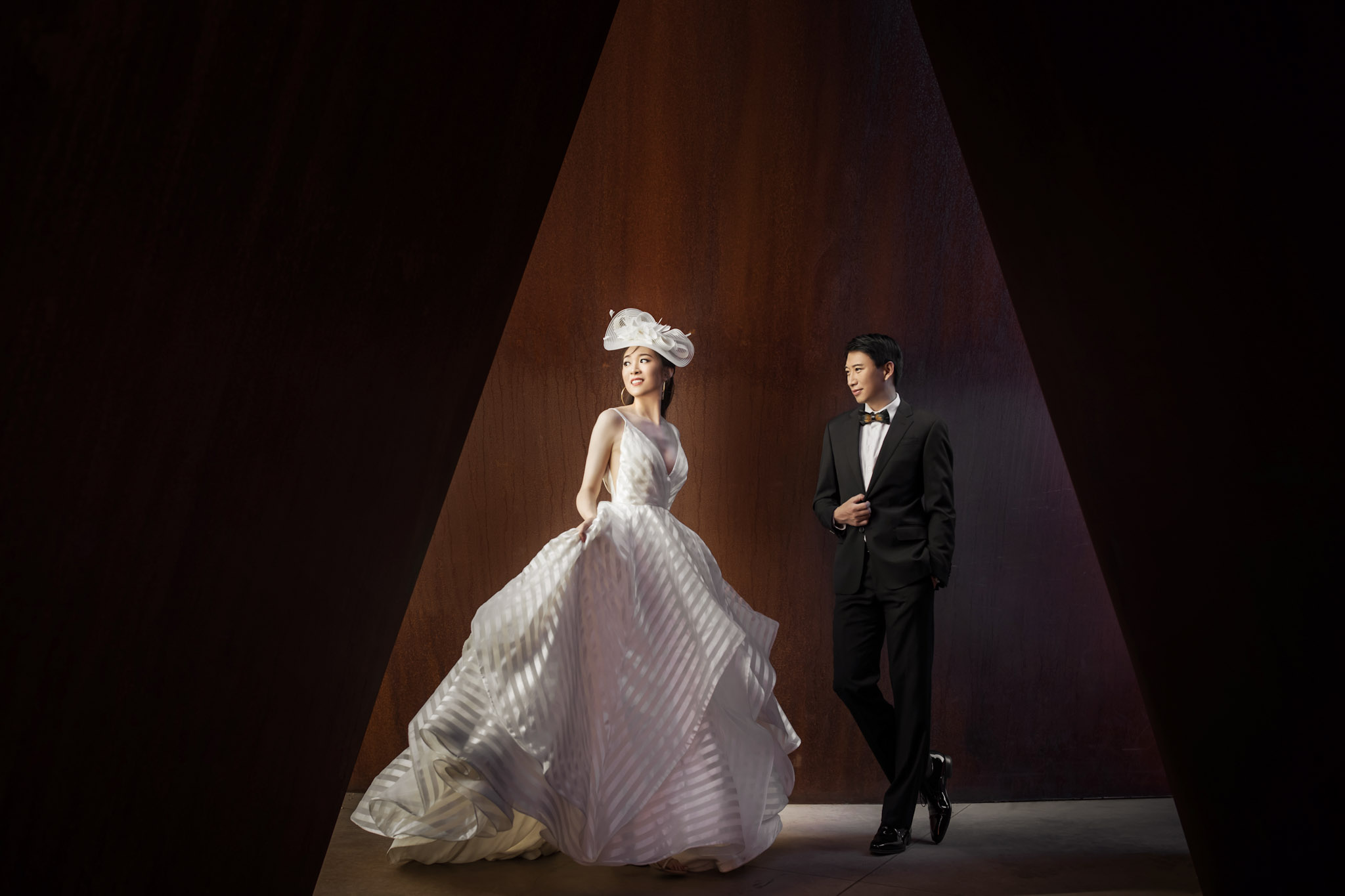
ShootDotEdit: Tell us about the origin of Danny Dong Photography. How did an MBA student get into wedding photography?
Danny: I came to the US for graduate school, where I majored in business and pursued an MBA. But the majority of my time was actually spent in the visual arts department. That’s where I picked up photography. I spent two years learning to use a film camera, experimenting with black and white film, color film, developing photos in the dark room, and spending time in the digital lab.
Before Danny Dong Photography was established, my initial interest in photography was in landscape photography, but I started to shoot models and I thought, “Oh, wow. Shooting people is challenging but it’s fun.” And after my MBA, I got an offer from a tech company in the Bay Area. So I moved there and I started doing photography on the side. One of the models I had photographed before contacted me saying, “Hey, Danny! I’m getting married. Do you do wedding photography?” And I hadn’t but I told her “I would love to try.” So she was my first wedding photography client. At that time I also had a friend in Southern California who was doing photography and we decided to do it together, so it was less risky. We were nervous. And because I had never really done wedding photography before, I did a bunch of research. I looked into who the top 10 wedding photographers were at the time, what documentary wedding photography was, and what the trending wedding photography styles were.
Big names like Jessica Claire, Ben Chrisman, and Jose Villa popped up in my searches at that time and I looked to them for inspiration and education to help me discover what wedding photography was, and how it was different from shooting models using studio lights.
After photographing that first wedding, I realized how challenging wedding photography really is. We have almost no control over the timeline, there’s very limited time for photography and sometimes, very limited space, and we have to get portraits, details of everything, images of the guests, and so much more, all in that timeframe. After that wedding I realized that I was really interested in this kind of photography. It was an opportunity for me to combine all the skills I had learned before with brand new skills that I needed to still acquire. So from that point I started to learn and do wedding photography on the side.
I met Julia (my now wife and business partner) at that time and we started dating. She was a software engineer, but she was also a creative, so I asked her to assist me with lighting for another wedding in the Bay Area, and she was willing to hold this huge piece of lighting equipment with a big battery pack for me! After one wedding, Julia said, “I quit. Sorry, I’m not going to be your wedding assistant. I need a camera. Give me your camera. I just want to prove I can shoot.” I gave her a camera and lost my assistant, but I gained a photographer! I didn’t have many lenses, so at that time, I only gave her one lens to use. It was an 85 mm 1.2, but she was really good. She has been primarily shooting with one camera and that one lens ever since.

So she shot with me for about six months and she really fell in love with photography. She has a very different eye than I do, which makes us a great team. I have an eye for landscape and wide angle. So at that time, my lens choice was a 15 mm, 16 mm or 24 mm. I use the environment as part of the storytelling. When people say wedding photography is about storytelling, it is – from all angles. Julia has an eye for emotion, for details, for the soft part, for the beauty part, which actually is also very important for wedding photography. We have a completely different approach and different style, but it’s really complementary. So when we show up as a team, I shoot wide angle, Julia shoots 85. So that’s our combination. It works out really well. I use a lot of light – off-camera flash especially – so a lot of my pictures are artificial light oriented, but Julia is 100% natural light. It works really well because one client gets two different styles of images when they choose Danny Dong Photography for their wedding.
I started doing photography in 2008 and, in 2010, I quit my other job. I became a full time wedding photographer. And so I went to different photography conventions, joined different online groups, started self-training, and started to attend online classes and physical workshops. I also started going to WPPI in 2010 and I enter their photography print competition every year to learn and refine my skills. Then in 2012 Julia also quit her job and she became a full-time photographer with me.
From 2012 to 2017, we did a lot of destination weddings worldwide. We covered weddings in Italy, Paris, Dubai, the Maldives. We went to a lot of amazing places. In 2018, Julia got pregnant so we decided that we should allocate more time for family. Julia then started spending more time at home, handling the post production, and I was more in the field. We also had two associates to help me and act as my second shooters. And then in 2020 COVID started. So everything just stopped, or was postponed or rescheduled. That was a tough year for us. But in 2021 things started getting back to normal. Last year (2021) was crazy busy. I think the craziest busy month we have ever shot was October. We shot 14 weddings in one month.
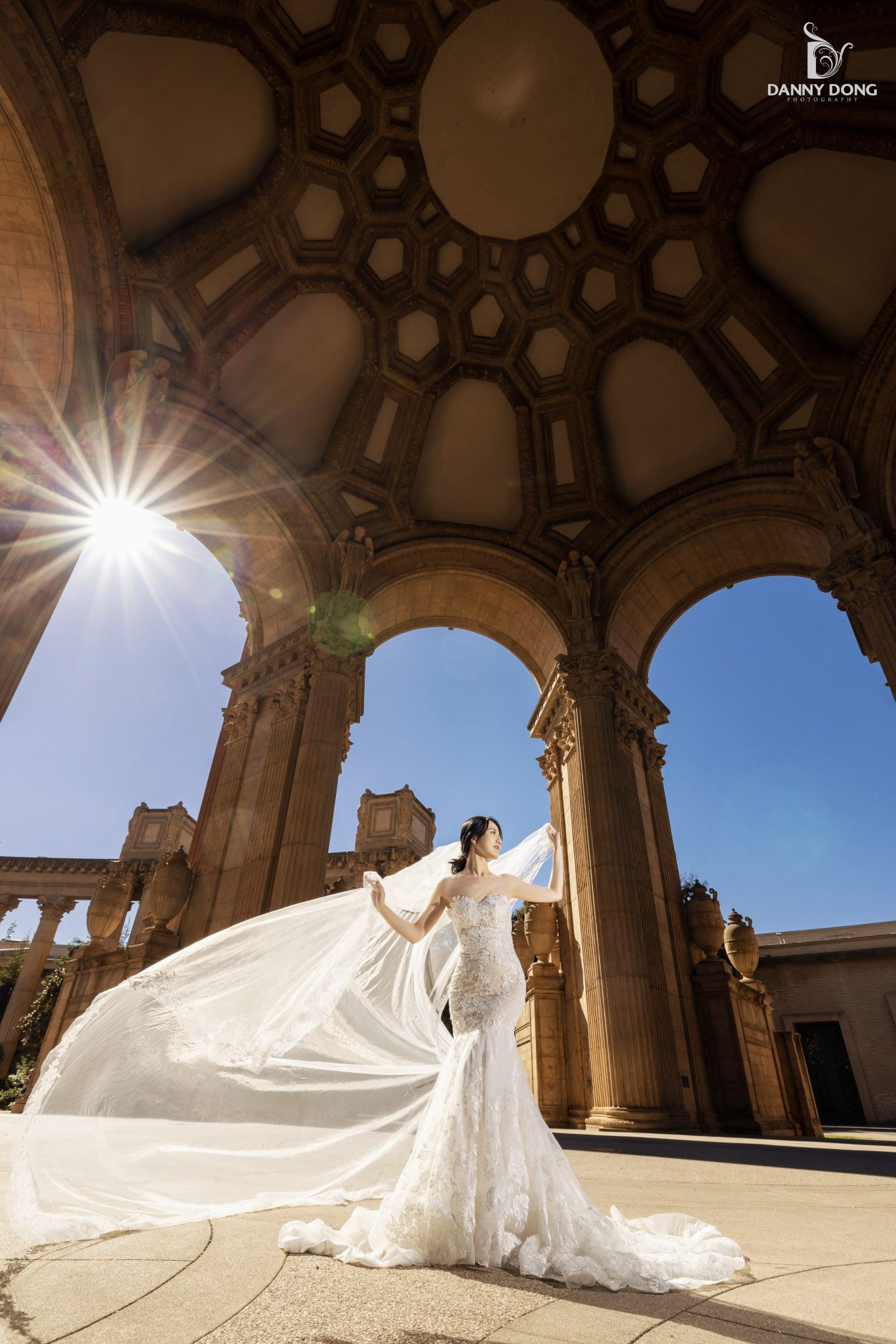
ShootDotEdit: That’s quite a journey! So we talked about lighting. You said you use a lot of off-camera light, and that’s also very evident in your work. What made you want to use lighting versus natural light and also how do you set it up in your head? Tell us about your artistic process.
Danny: I think lighting is the soul of photography. I have been painting since I was 5 – Chinese painting, oil painting, watercolor painting. And painting and photography are related in a lot of areas. For example, color, color theme, color contrast, and composition. But one big difference is that lighting is more crucial to photography than when painting. When you paint, you basically paint what you see with your eyes. Our eyes capture it and we come back and recreate it. But the camera sensor is a little bit different from the human eye. So when the light contrast ratio is too harsh, the camera sensor won’t be able to have that dynamic range. So for the final image in photography to look as we saw it requires imagination and skill. We have to be very experienced to predict what we are going to capture when we press the shutter. So lighting became very crucial for me in photography to be able to create that dynamic range as the eye sees it.
When I’m taking a picture, I have a few steps.
The first step is assessing and choosing a spot to photograph based on lighting instead of location. A lot of people think Danny Dong Photography is impressive because of the location shots – we do get to photograph at a lot of extravagant locations! – but I also want to say that before I decide a location, the first thing I actually consider is the lighting at the spot . I look to see if the location has the right lighting at the right position. What the location looks like comes second. Another priority for me is that if I can use existing light, if it’s perfect light, then I use it. But if the lighting is not perfect enough, I think about adding an artificial light to create the ideal lighting I want.
My process for shooting goes like this: Assess the location for light first, location background second, shoot using light wherever you find it, and supplement with off camera light to create your ideal lighting setting. For photographs that stand out, especially those taken at famous landmarks, go to a location when it isn’t busy, which means very early or very late.
Related Read: Off-Camera Lighting Inspiration By ShootDotEdit Customers
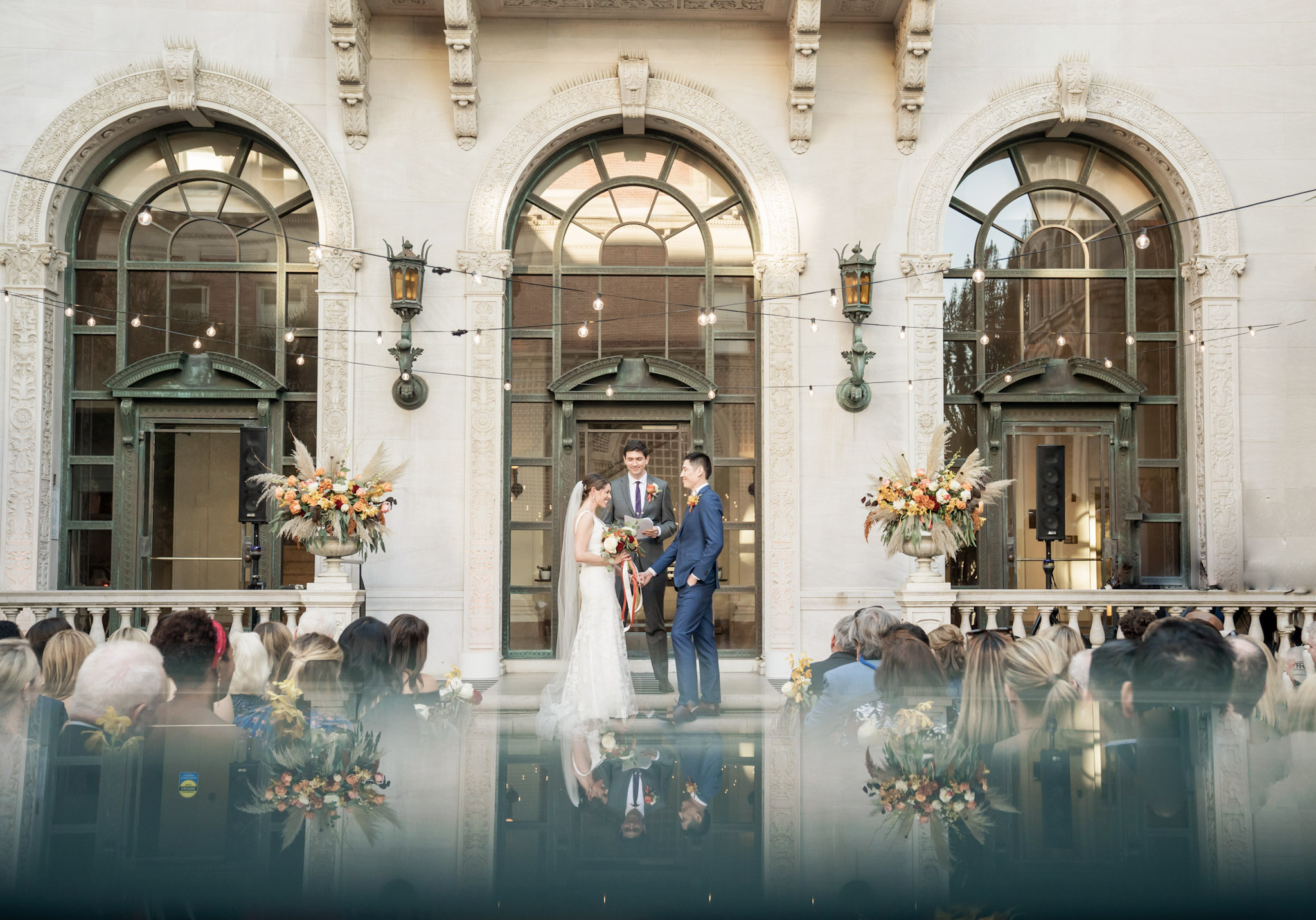
ShootDotEdit: So you mentioned that you started photography as a side business, right? Could you elaborate on what was maybe the hardest part about what you have done business-wise? What was the hardest to learn or master in the business?
Danny: I think one of the most difficult parts has been how to find my own style and how to attract the clients that like my style. Another challenge has been learning how to make the business profitable. I think the first few years we tried all types of marketing techniques. We went to bridal shows, which are a lot of hard work. I remember our early years, we did six bridal shows in one year, which means six weekends of waking up at 5 in the morning, packing everything, driving to the convention center, setting up the booth and then changing and meeting and talking to people, trying to tell them, “I am the best and you should hire me.” You get a lot of inquiries and then you come back, email them to follow up and try to close the deal. So at the beginning we paid a lot for bridal show stands. And then also we did all types of online marketing. We tried one that cost $300 per month, and after one year, I was like, “Why did I only get one booking from my efforts?” By then I had already paid $3600. Then there’s a representative from Yelp saying, “Hey, do you want to advertise with us? When people search on Yelp, you will be in the top three, showing up in the banner.” We paid, we tried and said, “Well, it doesn’t work.” It cost me a lot of time answering all the inquiries and emails before I realized this kind of marketing wasn’t a good fit for us.
Suggested Read: Wedding Photography Email Templates To Save Time + Speed Up Workflow
I think it’s easy to enter the photography market. There’s no entry barrier. If you have a camera, if you want to use your camera to create images and sell to people, you can do it. But the question is can you find your right market? Can you find the right target customer you like?
During our first bridal show, since we didn’t have much experience in wedding photography or luxury weddings to show people, we decided that instead of showing wedding photos, we would showcase our personal travel pictures from a trip to Hawaii – self portraits of Julia and I in swimming pools, underwater, on the road to Hana – all were photographed with a tripod and a remote control. It worked out really well because brides got to see a photographer that was different from what other photographers were showing. Other photographers were showing photos of brides on the Golden Gate bridge and we were showing photos of a couple enjoying a certain kind of lifestyle, with vibrant colors, so it instantly drew their attention and set us apart. And people were interested, and they remembered us. Our photos showed them that we liked photographing couples doing outdoor activities, we liked traveling to remote destinations like Hawaii. So we attracted a lot of young couples this way – by doing and showing something different than what others were doing. In my experience, you should be trying to find your uniqueness and make people remember you because the market is always flooded with competitors doing a lot of the same thing.
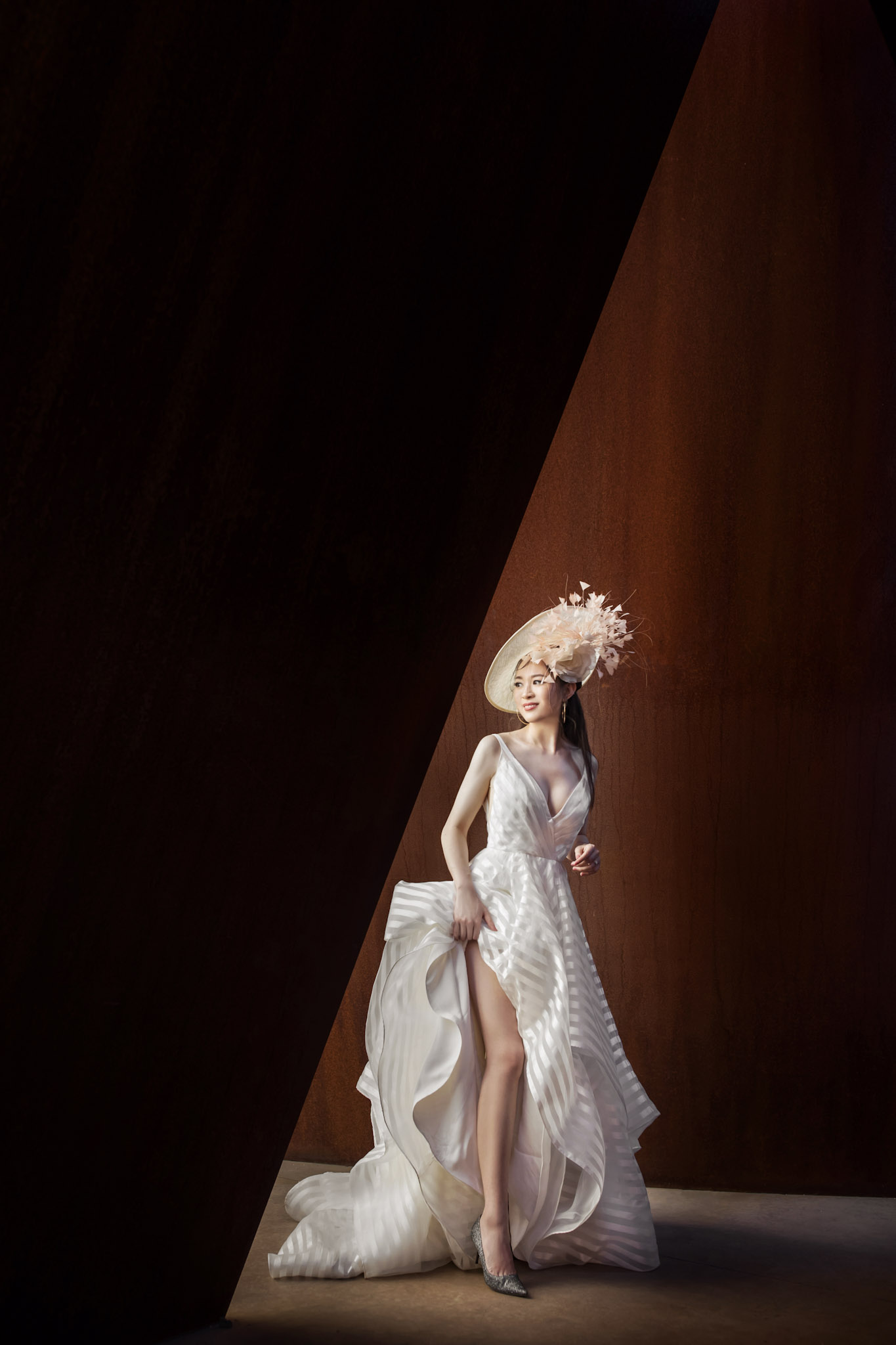
Bottom line – try to find your own strengths and market those. When I started out, my strengths were not my skills or my luxury weddings. I didn’t have those. But I wanted to attract energetic, fun, young people who were also willing to travel. So at that time my photos from Hawaii were my marketing campaign. And after two years we changed our display board. One year we had a photo of a bride laying on a couch partially naked but holding her wedding dress over her because we were trying to approach brides who liked glamor, who wanted images that were a little bit sexy and who were able to have an open mind. Whether people liked it, hated it or couldn’t accept it, our photos attracted attention and so people remembered us. Each bridal show might have 500 brides but our goal wasn’t to attract all 500 of them. Our goal was to attract maybe five of them. If we could attract even that 1% of the audience, couples who liked our style, who were willing to go with our style, we considered it pretty successful.
From early on we knew that we shouldn’t show people the images we didn’t want to sell. If you want to attract your ideal couples, find your uniqueness and try your best to build the customer base within that specific segment.
Suggested Read: How To Sign More High-End Weddings As A Photographer
ShootDotEdit: So do you guys still do bridal shows or have you moved into different forms of advertising?
Danny: We have moved into different forms of advertising. Bridal shows worked well for the beginning years, which were from 2009-2011. From 2011 on, we kept raising our prices. We started at $2500 and then gradually kept going up. Once we were above $5000, we figured out that bridal shows didn’t work very well. So we changed our marketing channels.
We have a lot of bookings from word of mouth. We’ve shot a sister’s wedding and then the brother’s wedding and then their sibling’s wedding and their bridesmaids’ weddings, so tons of word of mouth marketing. I think once a photographer successfully stays in the market for 5 years, they are able to build a referral base. If you make the goal to stay in the market for 5 years then referrals become the best source for marketing.
Suggested Read: How To Price Wedding Photography: 4 Tips For Setting Up Packages
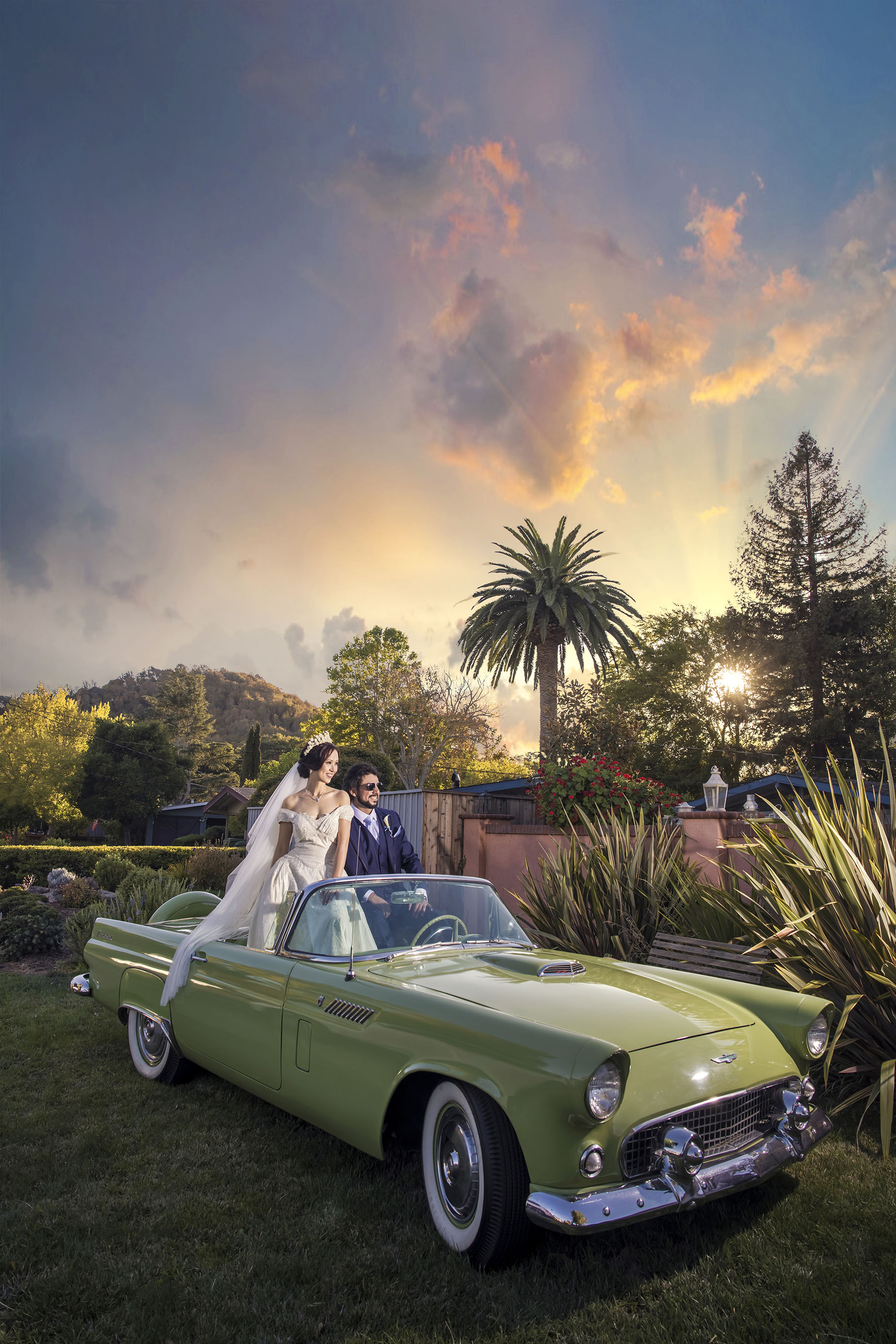
ShootDotEdit: And what about your clientele?
Danny: My client base is pretty diversified. We do a lot of Persian weddings. We do a lot of Jewish weddings. We also have American weddings. We have Asian weddings. We also have a lot of Indian weddings. It’s also because the Bay Area is diverse when it comes to ethnicities. So it all really depends on the region.
ShootDotEdit: So let’s talk about your business – where does outsourcing play in your business? How does ShootDotEdit help Danny Dong Photography?
Danny: Outsourcing is very important especially once your business grows and you have to prioritize tasks. I want to spend my time planning with my couples, understanding their preferences and shooting, so outsourcing frees my time. Sitting in front of a computer, looking through every single image, culling the images and then color correcting the images – those are the most time consuming tasks a photographer has for every single wedding. So for example we shoot a wedding for 8 hours. If I need to go cull those 3000-4000 wedding images, those 8 hours will become another 16 hours. Then after culling there is the color correcting of 500-600 images and that will cost me another 4 hours (if I am really efficient in Lightroom). Outsourcing my editing saves me all that time. Now, after each wedding I shoot, I come back home and back up the files. I create a Lightroom catalog. I then dump all the photos into the catalog. I do this on the same night after I shoot the wedding because the transfer of files into the catalog happens overnight since it takes a couple hours. And then next morning I upload the catalog to ShootDotEdit and go shoot my next wedding. After one week, ShootDotEdit gives the images back to me. So instead of starting from 3000 images, I start from the returned 600 color corrected images that you guys send back to me. I pick my favorites from those 600 and do my signature creative editing on those. I aim to create those artistic pieces from the ones selected by ShootDotEdit and that way I am not working on every single image. If I would have started from the beginning and did the culling and color correcting, I would be tired by the time I got to the creative editing stage. But because I outsource, I am still energetic. I’m still full of passion to do creative edits for those images, so my client can hang that piece of art created from their photo on the wall. This is why outsourcing is really important for Danny Dong Photography. My advice is try to outsource to free your time so you are able to spend the time on the most critical part for an artist.
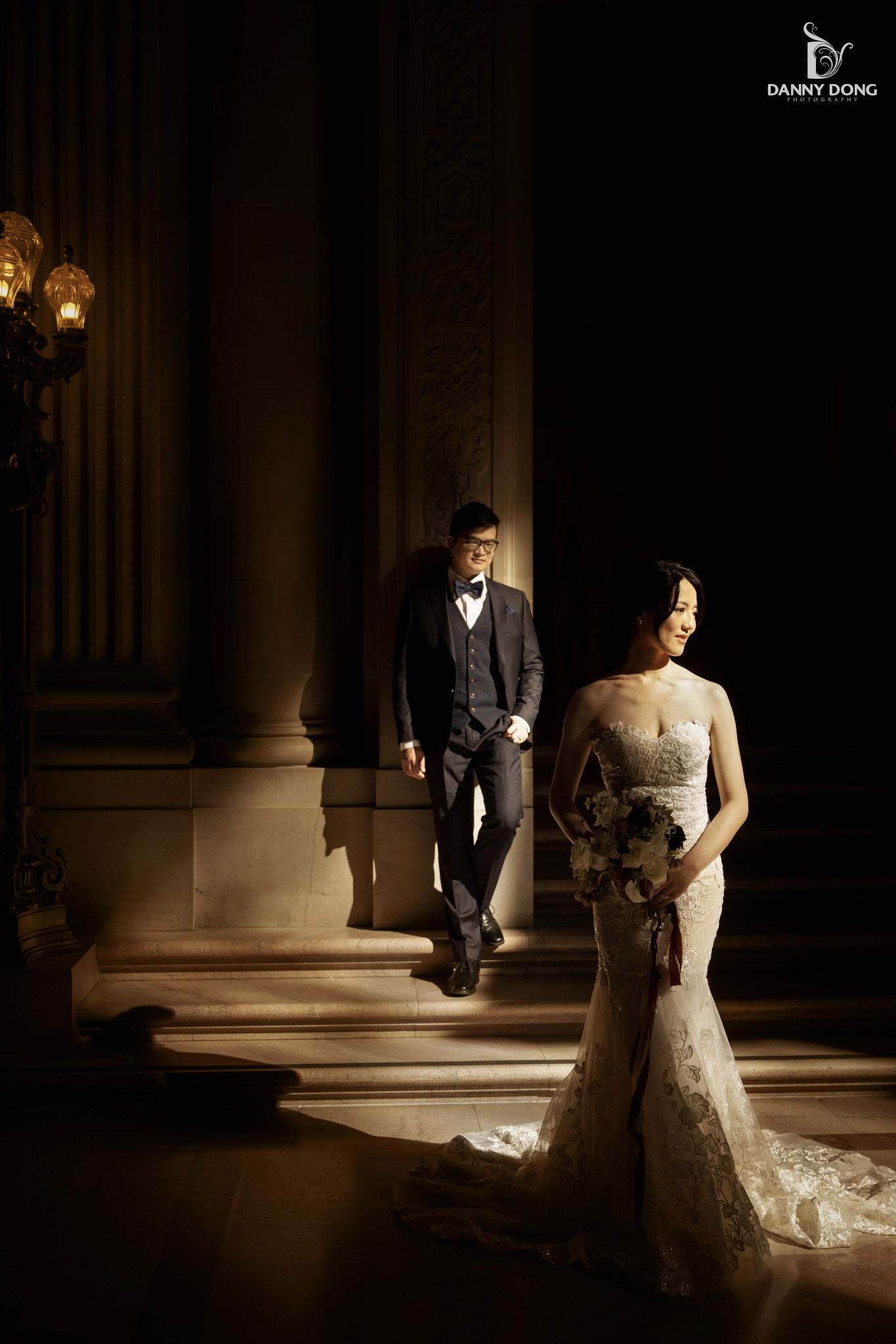
ShootDotEdit: Absolutely agree with you! That’s what we are here for. Are there any other vendors that you can’t run Danny Dong Photography without?
Danny: I think my album company Finao is amazing. Yes, our digital images are one part of our sales revenue. But we don’t ignore the upsell part – the album – because that’s another incentive to keep selling your work. Bay Photo Lab always creates amazing prints for the wall art piece of what we offer. For lighting, Profoto is the best and the most reliable. And the revolutionary Canon R5 is my new go-to camera! It’s so small and so compact.
Experience Luxury With Danny Dong Photography
Every ShootDotEdit customer has a story behind their brand. These are stories that inspire, stories that warm our hearts, stories that reinvigorate and remind us why we believe in the fruit of hard work. Danny’s story is no different. Indoors or outdoors – his photographs have the power to take us to a different world and each image has a unique story behind how it was shot. Danny is an artist who has learned how to not only master the camera but also the business side of wedding photography. Danny, thank you so much for taking the time to speak with us. We are big fans of yours and we don’t think that’s going to change any time soon. You can check out Danny’s work on his Instagram, Facebook, or website.
Further Read: The Importance Of Implementing Business Processes In Wedding Photography: Featuring Infinite Loop Photography
At ShootDotEdit, we bring you our customers’ stories to inspire and to also show you why outsourcing can free up your time so you can do more important things. If photo editing is taking up too many of your hours, do what Danny Dong does and turn it over to us. We are here to lessen your workload with our professional photo editing services. To learn more about how we can help your wedding photography business, check out our pricing plans.


Leave a comment